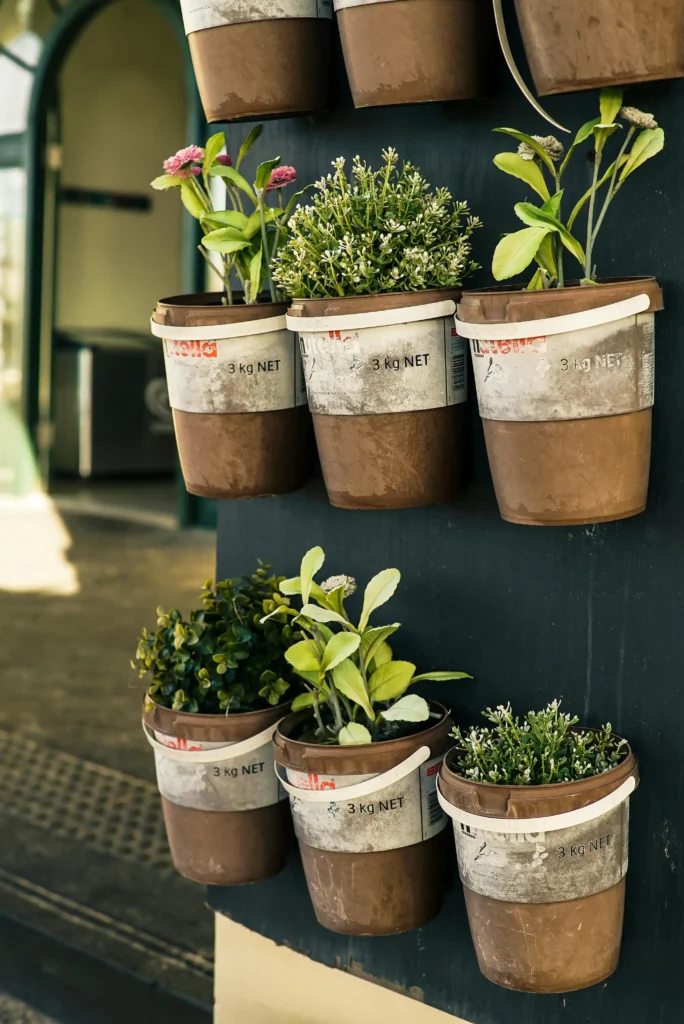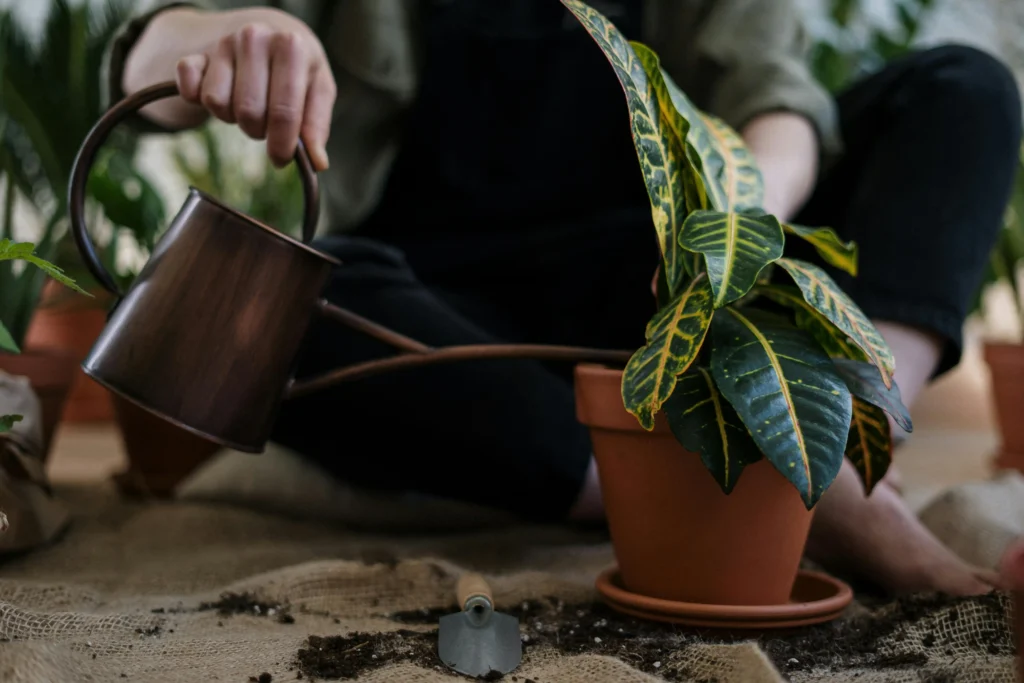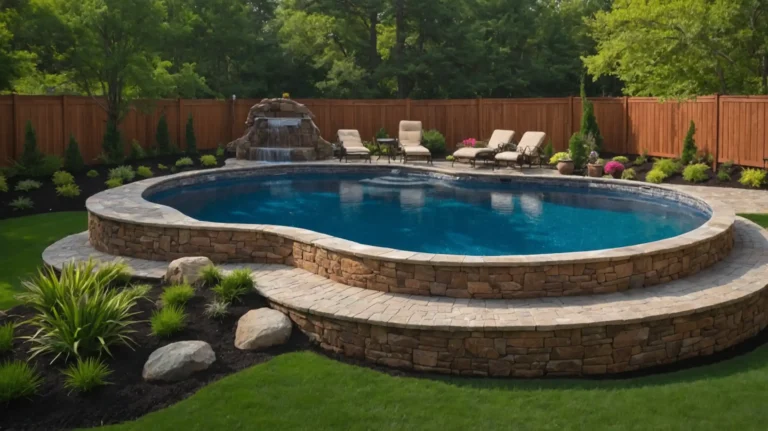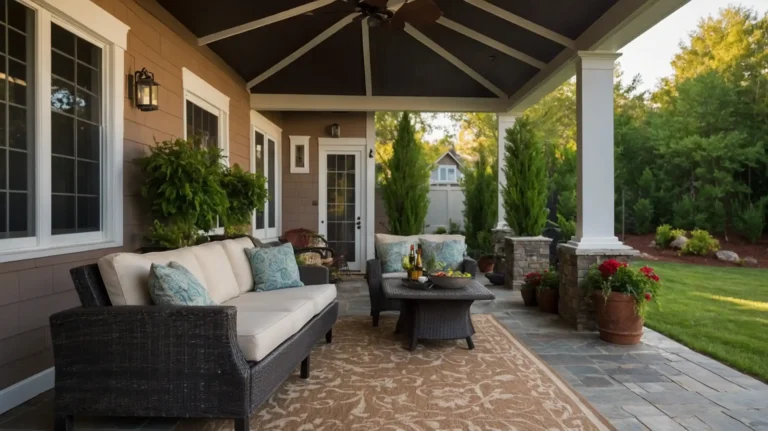Best Garden Layouts for Balconies and Patios
You don’t need acres of land to create a stunning garden oasis.
Your balcony or patio offers endless possibilities for growing beautiful plants, fresh herbs, and even vegetables.
With smart planning and creative layouts, you can transform any small outdoor space into your personal green sanctuary.
Vertical Garden Magic: Maximize Your Wall Space

When you’re working with limited floor space, think upward.
Vertical gardening transforms blank walls into living masterpieces while giving you maximum growing potential in minimal square footage.
Wall-mounted planters create stunning focal points on any vertical surface.
You can install modular systems that allow you to customize arrangements based on your plants’ needs.
These systems work particularly well for herbs, succulents, and trailing plants that cascade beautifully downward.
Trellis systems offer another vertical solution that adds architectural interest to your space.
You can train climbing plants like jasmine, clematis, or even cucumber vines up these structures.
The result creates natural privacy screens while producing flowers or food.
Hanging planters suspended at different heights create visual depth and dimension.
You can stagger them to form living curtains or position them strategically to frame views.
Choose lightweight materials like coconut fiber or plastic to avoid overloading your ceiling attachments.
The Corner Oasis: Transforming Awkward Spaces
Corner spaces often go unused, but they offer perfect opportunities for creating intimate garden nooks.
These areas naturally feel enclosed and cozy, making them ideal for relaxation spots surrounded by greenery.
Multi-tiered corner plant stands maximize vertical growing space while maintaining easy access to all your plants.
You can arrange plants by height, with taller specimens in back and shorter ones cascading toward the front.
This creates natural layering that looks professionally designed.
Corner water features add soothing sounds and attract beneficial wildlife to your garden space.
Small fountains or wall-mounted water elements create calming focal points.
The sound of moving water also helps mask urban noise, creating a more peaceful environment.
Built-in corner seating surrounded by planters creates functional living spaces within your garden.
You can use weather-resistant cushions and arrange plants at eye level for intimate garden views while you relax.
Container Garden Symphonies: Orchestrating Portable Beauty

Container gardening gives you ultimate flexibility in your balcony or patio design.
You can rearrange plants seasonally, move tender specimens indoors during harsh weather, and experiment with different combinations throughout the year.
Grouping containers in odd numbers creates more visually appealing arrangements than even-numbered clusters.
You can vary heights using plant stands, overturned pots, or decorative risers. This technique prevents your garden from looking flat and monotonous.
Color coordination between containers and plants creates cohesive design themes.
You might choose neutral pots that let colorful flowers shine, or select bold containers that become decorative elements themselves.
Matching materials like terracotta, ceramic, or metal helps unify your overall look.
Seasonal container swapping keeps your garden looking fresh year-round.
You can prepare containers for each season and simply swap them out as plants finish blooming or weather changes.
This approach ensures continuous color and interest.
Linear Layouts: Making the Most of Narrow Spaces
Long, narrow balconies and patios require different design strategies than square spaces.
Linear layouts help guide the eye along the length of your space while creating functional zones for different activities.
Railway planter boxes installed along railings maximize growing space without taking up floor area.
These long, narrow containers work perfectly for herbs, lettuce, and other compact vegetables.
You can install them at convenient heights for easy harvesting and maintenance.
Pathway gardens use stepping stones or pavers to create walkways between planted areas.
This technique works especially well on longer patios where you want to create journey-like experiences through your garden space.
You can vary plant heights and textures along the path for visual interest.
Zone division using plants or trellises creates distinct areas within narrow spaces.
You might designate one end for dining, another for gardening activities, and a middle section for relaxation.
Plants help define these zones naturally while maintaining visual flow.
Herb Garden Perfection: Culinary Gardens Within Reach

Dedicating space specifically to herbs creates functional beauty that enhances your cooking while providing wonderful fragrances.
Herb gardens work exceptionally well in small spaces because most herbs thrive in containers and don’t require extensive root systems.
Tiered herb spirals maximize growing space in compact areas while creating sculptural garden elements.
You can build these using stones, bricks, or wood, with Mediterranean herbs like rosemary and thyme at the top where drainage is best, and moisture-loving herbs like parsley at the bottom.
Kitchen window herb boxes put fresh ingredients within arm’s reach of your cooking space.
These specialized containers can attach directly to railings or sit on nearby surfaces. You’ll find yourself using more fresh herbs when they’re conveniently located.
Themed herb collections focus on specific cuisines or uses, creating both practical and educational garden elements.
You might create Italian herb gardens with basil, oregano, and sage, or tea gardens featuring mint, chamomile, and lemon balm.
Micro-Ecosystem Magic: Creating Balanced Plant Communities
Designing your balcony garden as a mini-ecosystem supports plant health while creating more interesting and sustainable growing environments.
This approach mimics natural plant communities where different species support each other.
Companion planting principles apply even in container gardens, where certain plants grow better together.
You can pair heavy feeders with light feeders, or combine plants that naturally repel each other’s pests.
These relationships create healthier, more productive gardens.
Pollinator-friendly plant selections attract beneficial insects even to high-rise balconies.
Bees, butterflies, and other pollinators will visit flowers like lavender, zinnia, and native wildflowers.
These visitors help pollinate any vegetables or fruits you’re growing.
Succession planting ensures continuous harvests and year-round interest.
You can stagger plantings of quick-growing crops like lettuce and radishes, or replace finished plants with new varieties throughout the growing season.
Weather-Wise Design: Adapting to Your Microclimate
Your balcony or patio has its own unique microclimate influenced by building shadows, wind patterns, and sun exposure.
Understanding these conditions helps you choose appropriate plants and layout strategies for long-term success.
Wind protection strategies become crucial on exposed balconies and upper-floor patios.
You can use tall plants, screens, or trellises to create windbreaks that protect more delicate specimens.
Even partial wind protection makes dramatic differences in plant health and your comfort.
Sun mapping throughout the day helps you place plants in optimal locations for their light requirements.
You can observe how sunlight moves across your space during different seasons and position plants accordingly.
Full-sun lovers go in the brightest spots, while shade plants tuck into corners or behind taller specimens.
Microclimate modification using reflective surfaces, shade cloth, or thermal mass helps create better growing conditions.
Light-colored walls reflect extra light to shadier areas, while thermal mass from stone or concrete moderates temperature swings.
Seasonal Transitions: Year-Round Garden Interest
Planning for seasonal changes ensures your balcony garden remains attractive throughout the year, even in climates with distinct seasons.
This forward-thinking approach prevents your space from looking bare during dormant periods.
Winter structure plants provide backbone during months when annual flowers and vegetables have finished.
Evergreen shrubs, ornamental grasses, and plants with interesting bark or seed heads maintain visual interest when most plants are dormant.
Spring preparation involves planning early-season color with bulbs, cool-season vegetables, and early-flowering perennials.
You can force bulbs indoors during winter and move them outside as they bloom, creating instant spring color.
Summer peak planning ensures you have strategies for dealing with intense heat and maintaining adequate water during the most challenging growing season.
This might involve shade cloth installation, automatic watering systems, or heat-tolerant plant selections.
Budget-Friendly Layout Strategies

Creating beautiful balcony gardens doesn’t require enormous investments.
Smart shopping, DIY projects, and strategic plant choices help you achieve stunning results while staying within reasonable budgets.
Seed starting and propagation dramatically reduce plant costs while giving you access to unusual varieties. You can start herbs and vegetables from seed, take cuttings from friends’ plants, or divide perennials to multiply your plant collection.
Repurposed container ideas transform everyday items into unique planters.
Old boots, colanders, wooden crates, and even plastic storage containers can become attractive plant homes with proper drainage holes added.
Plant swapping with neighbors and friends builds community while expanding your plant collection at no cost.
Many gardeners have excess plants they’re happy to share, and local gardening groups often organize formal plant swaps.
Maintenance Made Simple: Sustainable Garden Systems
Designing your balcony garden with maintenance in mind ensures you’ll continue enjoying your space without feeling overwhelmed by upkeep requirements.
Simple systems and smart plant choices make garden care manageable even with busy schedules.
Automated watering systems prevent plant stress during vacations or busy periods.
You can install drip irrigation systems, self-watering containers, or simple timer-controlled sprinklers that keep plants healthy with minimal daily intervention.
Low-maintenance plant selections reduce ongoing care requirements while still providing beauty and function.
Native plants, drought-tolerant species, and disease-resistant varieties require less frequent attention than high-maintenance specimens.
Organized tool storage keeps everything you need within easy reach while maintaining a tidy appearance.
Wall-mounted tool racks, storage benches, or rolling carts help you stay organized in small spaces.
## Conclusion
Transform your balcony or patio into a thriving garden oasis using these proven layout strategies and design principles for maximum beauty and functionality.







